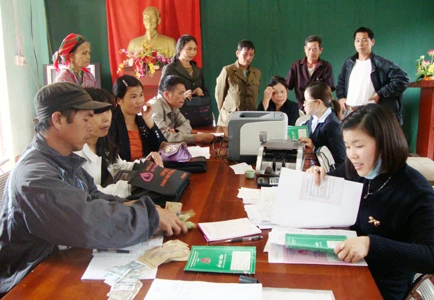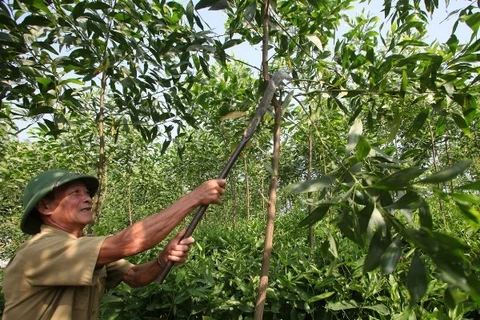Vietnam has taken the lead in applying a multidimensional poverty measurement approach in Asia, which is part of efforts to realise its commitments to eradicating poverty in all forms, Minister of Labour, Invalids and Social Affairs Pham Thi Hai Chuyen has said.
At a forum in Hanoi on October 15, she said that the Vietnamese Government replaced a one-dimensional approach by the multidimensional poverty measurement method for 2016 – 2020 in last September.
The approach, aiming to improve people’s livelihoods as well as their access to basic social services, especially health care, education, housing, clean water and information, is recommended by the international community to reduce poverty.
Chuyen added her country will overhaul its poverty elimination mechanisms and policies so as to address existing flaws. It will increase conditional loan packages, prioritise supports to low-income women and ethnics, and expand policies designed for near-poor households and those just rising out of poverty.
Vietnam will mobilise various resources for the work, particularly from the public and low earners themselves, while putting more effort into deprived communes and mountainous and ethnic minority communities to narrow the income gap among regions and demographic groups, the official noted.
At the forum, UN Resident Coordinator in Vietnam Pratibha Mehta highlighted that over the last 15 years, the poverty-hit household rate has dropped to below 10 percent, and primary education enrolment has approximated 100 percent for both boys and girls, while maternal mortality rate has been cut down by 75 percent since 1990.
A few countries have reaped those achievements, she said, noting that challenges are still ahead if Vietnam wants to realise the ambitious Sustainable Development Goals.
She pointed to Vietnam’s unfinished Millennium Development Goals on certain regions and demographic groups, especially ethnic minorities and mountainous areas. The income-related poverty rate among ethnics is currently 3.5 times higher than the national average.
Like other middle-income countries, Vietnam is facing an array of structural changes, including urbanisation, industrialisation, and internal migration. New forms of multidimensional poverty have appeared in the groups of migrants and workers in informal employment in cities, Mehta said.
A 2012 survey showed that the multidimensional poverty rate among migrants in Ho Chi Minh City was four times higher than that of the city’s dwellers. Meanwhile, a majority of Vietnam’s population still lives near the poverty line, and any shocks from natural disasters, economic changes or health problems could make them relapse into poverty, the UN Resident Coordinator stressed.
The forum, themed “Actions of Vietnam to leave no one behind”, was held on the occasion of the International Day for the Eradication of Poverty and the Day for the Poor in Vietnam (October 17) by the Ministry of Labour, Invalids and Social Affairs, the Government’s Committee on Ethnic Minority Affairs, the United Nations Development Programme and the Ireland Embassy.-VNA
























